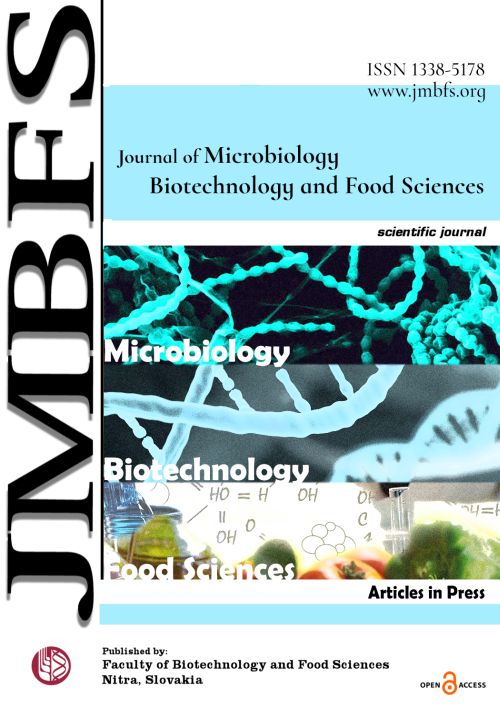A NOVEL APPROACH IN USING E. ELATERIUM NANOPARTICLES AS A NATURAL ANTIMICROBIAL AGENT COMBATING MULTIDRUG-RESISTANT STREPTOCOCCUS PYOGENES
DOI:
https://doi.org/10.55251/jmbfs.12185Keywords:
Ecballium elaterium, Multidrug-resistant, NanoparticlesAbstract
Every day, the number of deadly pathogenic multidrug-resistant (MDR) S. pyogenes increases so posing a serious threat to human health. This study's goal was to determine and measure S. pyogenes in clinical samples using serotyping. The mefA gene, which is responsible for Macrolide resistance, the parC gene, which is responsible for Quinelone resistance, and the tetO & tetM genes, which are responsible for Tetracycline resistance, were detected. Nano E. elaterium was used as an all-natural treatment for MDR S. pyogenes strains. Eighty specimens were found to have S. pyogenes. 22 out of 80 samples (27.5%) had multidrug resistance. On the other hand, males were probably more susceptible to infection. 36.36% of S. pyogenes isolates had the four genes, whereas 86.36% had the mefA gene, 77.27% had the parC gene, 77.27% had the tetO gene, and 86.36% had the tetM gene. For E. elaterium nanoparticles, the MIC was determined to be 20µg/ml. The cytoplasmic structures, nuclear material, and cell wall of MDR S. pyogenes were all harmed by E. elaterium nanoparticles. Additionally, they had a greater impact on the human gastric epithelial cell line's (GESI) cell viability than the gentamicin drug. Gentamicin was more cytotoxic to GES1 normal cells than E. elaterium nanoparticles, as evidenced by the IC50 of the dug being 190.0±8µg/ml and that of the E. elaterium nanoparticles being 1220.0±73µg/ml. E. elaterium nanoparticles are safer than gentamicin and have a strong impact against MDR S. pyogenes.
Downloads
Downloads
Published
How to Cite
Issue
Section
License
Copyright (c) 2023 Mahmoud Abd El-Mongy, Amal S. Othman, Mosaad H. Mosaad, Hamdy A. Elkhateeb

This work is licensed under a Creative Commons Attribution 4.0 International License.
All papers published in the Journal of Microbiology, Biotechnology and Food Sciences are published under a CC-BY licence (CC-BY 4.0). Published materials can be shared (copy and redistribute the material in any medium or format) and adapted (remix, transform, and build upon the material for any purpose, even commercially) with specifying the author(s).





